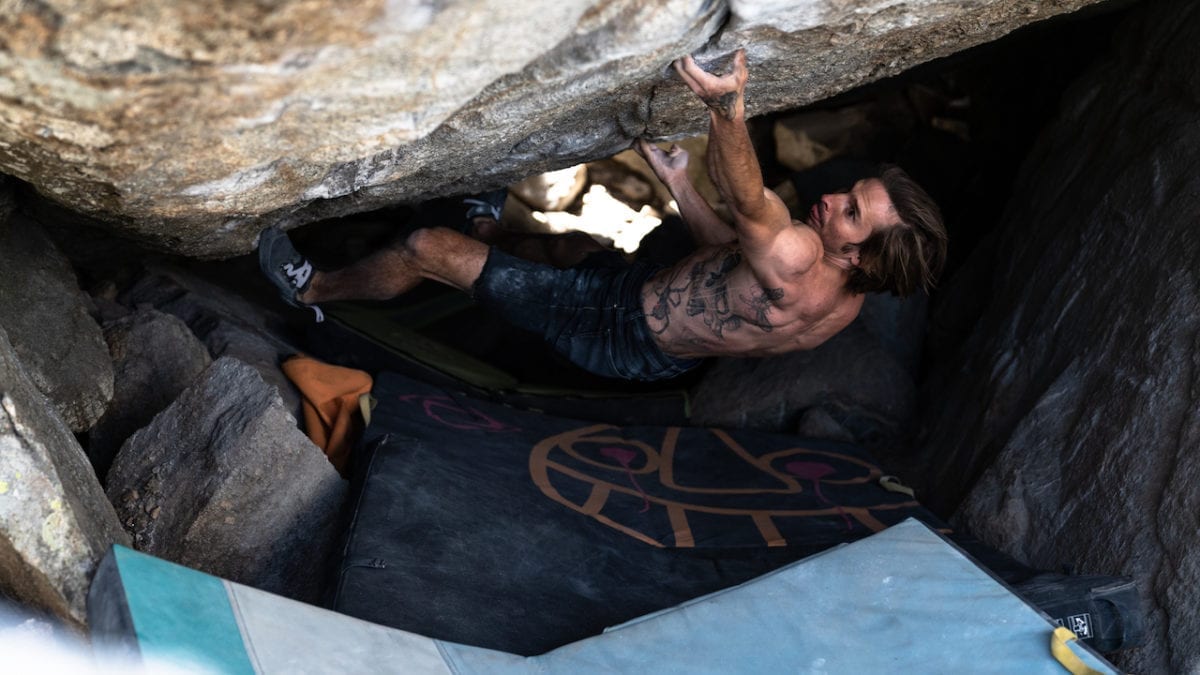Daniel Woods Earns Third Ascent of Grand Illusion V16
The Grand Illusion has finally seen its third ascent. North American climbing is on fire, but what comes next for the professionals?
 Photo by: Dave Burleson
Photo by: Dave Burleson
In this last year, American Climbing has exploded. On June 7, Daniel Woods completed the third ascent of Nathaniel Coleman’s The Grand Illusion.

On August 4, 2020 Nathaniel Coleman would establish America’s newest V16. The Grand Illusion begins low, sat down at the furthest extent of the Euro Roof Boulder. For Coleman, the boulder featured 25 unique hand movements excluding readjusts and including mantle movements.
The Utah-based boulder exists as the only established granite problem of its difficulty in this style. While steep granite boulders do exist at this level elsewhere in the United States, Box Therapy for example, the sustained difficulty of this bicep-intensive power-endurance test piece makes it remarkable.
While stoke for this project has existed for quite some time, it would not be until Drew Ruana began working this problem last year that climbers would come together to try and finish it. Chris Sharma established the already challenging Euro Roof Low at V13. The Grand Illusion, for Ruana, adds 13 hand movements into this already challenging sequence.
Recent World Cup winner Sean Bailey would earn himself the second ascent. The climb folds well into his successful year in American competition and on rock. He would complete the boulder in November 2020, ultimately giving it a sport grade of 9a+/9b, or 5.15a/5.15b by the Yosemite Decimal System.
This, in some ways, left the grade unconfirmed for speculative climbers the wondered how Coleman could climb V16 with so little bouldering experience upwards of V14. Yesterday, Woods would confirm the difficulty at V16 requiring multiple sessions and trips to ultimately finish the boulder.
Woods came close to completing the problem in November 2020, but the end of the problem remained just out of reach. Following an extremely dedicated season, Woods appears to have returned to peak form. According to 8a, Woods completed the Grand Illusion in 22 sessions with 21 hand moves to the final jug.
After a great many weeks, climbers still await his footage of Return of the Sleepwalker, a new V17 established in Red Rocks. This boulder has the capacity to be the most difficult problem in the world. The only other problem of the same difficulty is Nalle Hukkataival’s Burden of Dreams a V17 established in January of 2018. Neither problem has yet to see a second ascent.
In order to complete the low start to Sleepwalker, Woods embraced sobriety and clean living. Through extreme focus, he completed the limit boulder. While this ascent has received a lot of publicity, Woods has worked another extremely difficult boulder problem over these last months.
The Megatron Project features a challenging V15 into a V14 without any rest. By comparison, Return of the Sleepwalker climbs a V13 into V16. This Megatron Project is highly anticipated but could very well go at the V17 difficulty. Only time will tell.
Alongside Woods and his recent progression, Yosemite has seen an explosion in difficult bouldering.
Canadian Bouldering has also moved along thanks to development and project hunting from Yves Gravelle and Andy White. While a great many other people have also established both new areas and new boulders across the country, Gravelle consistently puts ups the country’s newest, hardest lines in the East while White does the same in the West.
White has found a few V15+ possible boulder problems in the Okanagan boulder fields. Gravelle has worked on some of the proudest granite boulder problems that still seek first ascents.


